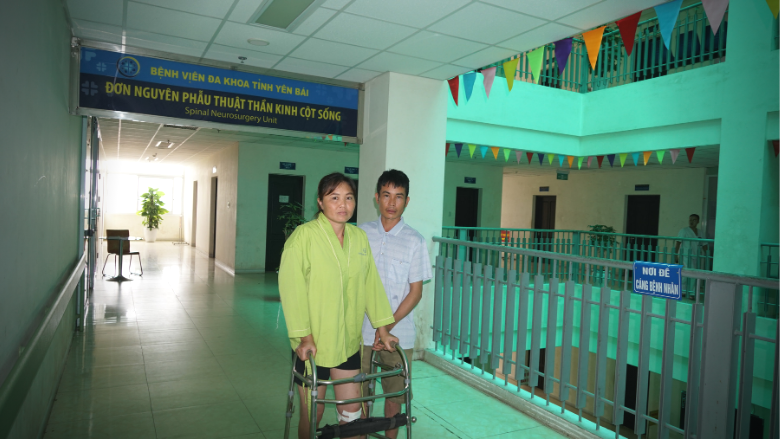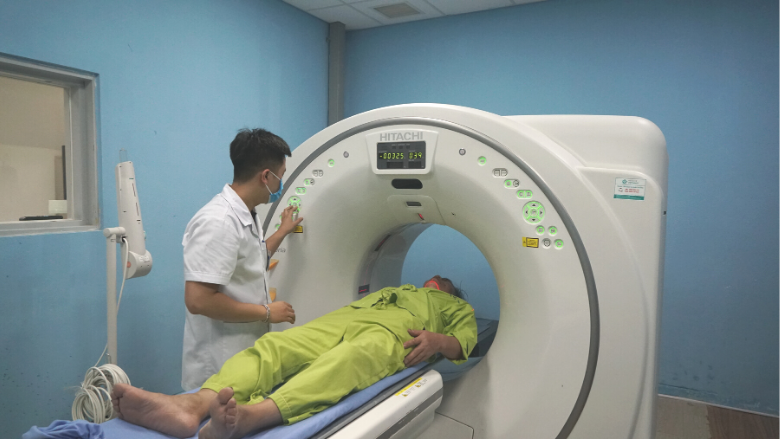Nguyen Thi Noi, 38, felt a sudden and stabbing pain in her left knee while working on her farm on a scorching summer day. Her husband immediately took her to the biggest hospital in the area – the Yen Bai General Hospital – which is 15 kilometers away from their farm. Her doctor concluded that a ligament in her knee was damaged and ordered a laparoscopic surgery. The operation went well, and she was recovering when we visited.
Things would have been different had the accident happened to Noi four or more years ago. She might have needed to seek care in a bigger hospital in Hanoi – which is a day away from her home in a remote village in Yen Bai Province.
“The hospital’s facilities were antiquated. Doctors could treat only a few illnesses. Many of us believed that it would be better to go to central hospitals in Hanoi for serious conditions or if you needed complicated procedures,” said Noi. For example, laparoscopic surgeries were not available at the hospital at that time.
Noi’s past thinking reflected what was – and, in many cases, still is – the calculus of many people living in the rural areas of Vietnam when they get sick. For local people, it is true that taking the whole day to travel down to big hospitals in urban areas is a physically and financially taxing endeavor. However, it does not reach the level that could deter them from visiting them as long as they believe they would be in more capable hands.

For many years, patients from neighboring provinces flocked to tertiary-level hospitals in Hanoi in droves and overloaded them. A survey by the Ministry of Health in 2012 noted that 59% of patients skipped the district/provincial hospitals to go straight to the central hospitals which are better equipped. Two or three patients sharing beds in these hospitals became the norm.
This phenomenon could be traced back to the limited capacity of the health system at the local level. The same survey noted that doctors at provincial hospitals might not able to perform up to 25% of the medical functions required of them. For the district hospitals, the rate went up to 33%. In addition, the local health facilities were much less equipped than their national peers.
. Broad actions have been taken, including significant investments to upgrade medical infrastructure and build capacity for professional health workers with a focus on the local level. The logic is simple: if patients have access to high-quality health services, at an affordable cost, and close to home, there will be no need to seek care elsewhere.
To deepen the government's reform efforts, the World Bank financed a US$126-million project – the North East and Red River Delta Regional Health System Support Project – in 2013 to strengthen the public hospital systems in 13 provinces in the Northeast and Red River Delta region. The program targeted five intervention areas for which the overcrowding was the most acute: cardiology, obstetrics/gynecology, pediatrics, oncology, and trauma (surgery).

